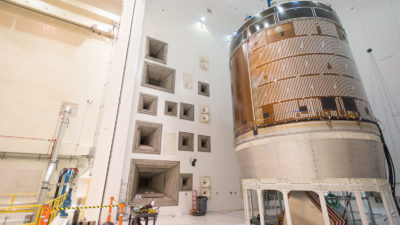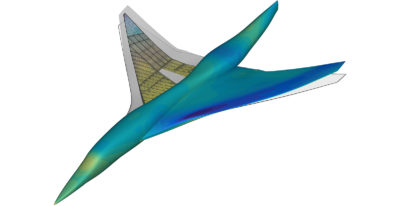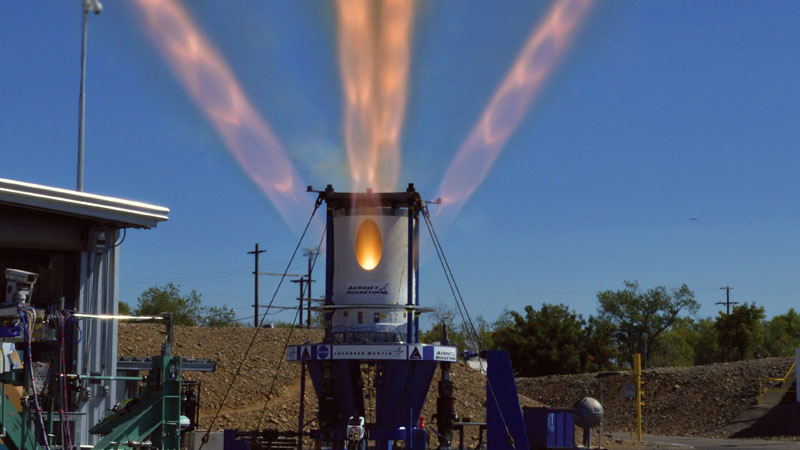Lightweight fission reactor passes test; work on innovative engine combustor
By David Poston, DAVID B. CARRINGTON AND RYO S. AMANO|December 2018
The Terrestrial Energy Systems Technical Committee works to advance the application of engineering sciences and systems engineering to the production, storage, distribution and conservation of energy for terrestrial uses.
The Kilopower nuclear power system could enable long-duration crewed missions to the moon, Mars and beyond. In May, NASA announced that this lightweight fission system passed an extensive operating test and performed well under various challenging conditions. The demonstration was called KRUSTY, short for Kilopower Reactor Using Stirling Technology.
Kilopower, which passed tests for nominal and off-normal operating scenarios, is capable of providing up to 10 kilowatts of electrical power — enough to run several average households — continuously for at least 10 years. Four Kilopower units would provide enough power to establish an outpost for astronauts on Mars. The prototype power system contains a solid, cast uranium-235 reactor core, about the size of a paper towel roll. Passive sodium heat pipes transfer reactor heat to high-efficiency Stirling engines, which convert the heat into electricity.
NASA and the U.S. Department of Energy’s National Nuclear Security Administration conducted the test at the Los Alamos-led National Criticality Experiments Research Center at the Nevada National Security Site.
“Safe, efficient and plentiful energy will be the key to future robotic and human exploration,” said Jim Reuter, NASA’s acting associate administrator for the Space Technology Mission Directorate, in a press release.
NASA’s Glenn Research Center in Cleveland leads the project in partnership with NASA’s Marshall Space Flight Center in Alabama and the National Nuclear Security Administration, including Los Alamos, Nevada National Security Site and Y-12 National Security Complex. “Kilopower gives us the ability to do much higher-power missions, and to explore the shadowed craters of the moon,” said Marc Gibson, lead Kilopower engineer at Glenn. “When we start sending astronauts for long stays on the moon and to other planets, that’s going to require a new class of power that we’ve never needed before.”
In the turbine engine field, a team led by the University of Wisconsin-Milwaukee in May began design and development of a gas turbine combustor that will work differently from the combustor in a conventional gas turbine engine. A turbine engine must typically generate a uniform flow of combustion gases to spin its blades without excessive wear or risk of damage for high-performance in power efficiency in aerospace power propulsion devices. Damaging spikes in temperature and pressure are avoided by allowing the volume of gas to expand, which encourages even deflagration, the term for the rapid burning of the fuel-air mixture as it is sprayed or injected into the combustor. The resulting stream of combustion gases rushes through the engine, spinning turbine blades before it exits. The University of Wisconsin-Milwaukee design will produce a highly uniform temperature and velocity field at the exit of the combustors, before impinging to the gas turbine stator and rotor stages. The idea is to protect the gas turbine rotor and stator components from thermal cracking to keep the engine performance raised over that of existing gas turbine combustor designs.
The team’s combustor design contains an American football shape body to control the exhaust flow, but one with guide vanes mounted on the surface of the body to cause swirling flow streams. Some significant achievements of the usage of a streamlined shape are examined in staggered holes mixing chamber of the primary hot stream and radial cooling jets. The addition of swirling fins was the primary interest to increase the vorticity in the flow and enhance dispersion. Flow and temperature fields with the seven swirling patterns were analyzed and represented through experimental work and followed computer simulations.
Editor’s note: David Poston works at Los Alamos National Laboratory.
Photo: Kilopower, a lightweight fission system, passed a key test this year at the Nevada National Security Site. The demonstration was called KRUSTY, short for Kilopower Reactor Using Stirling Technology. This photo shows the fully assembled KRUSTY core. Credit: Los Alamos National Laboratory



































